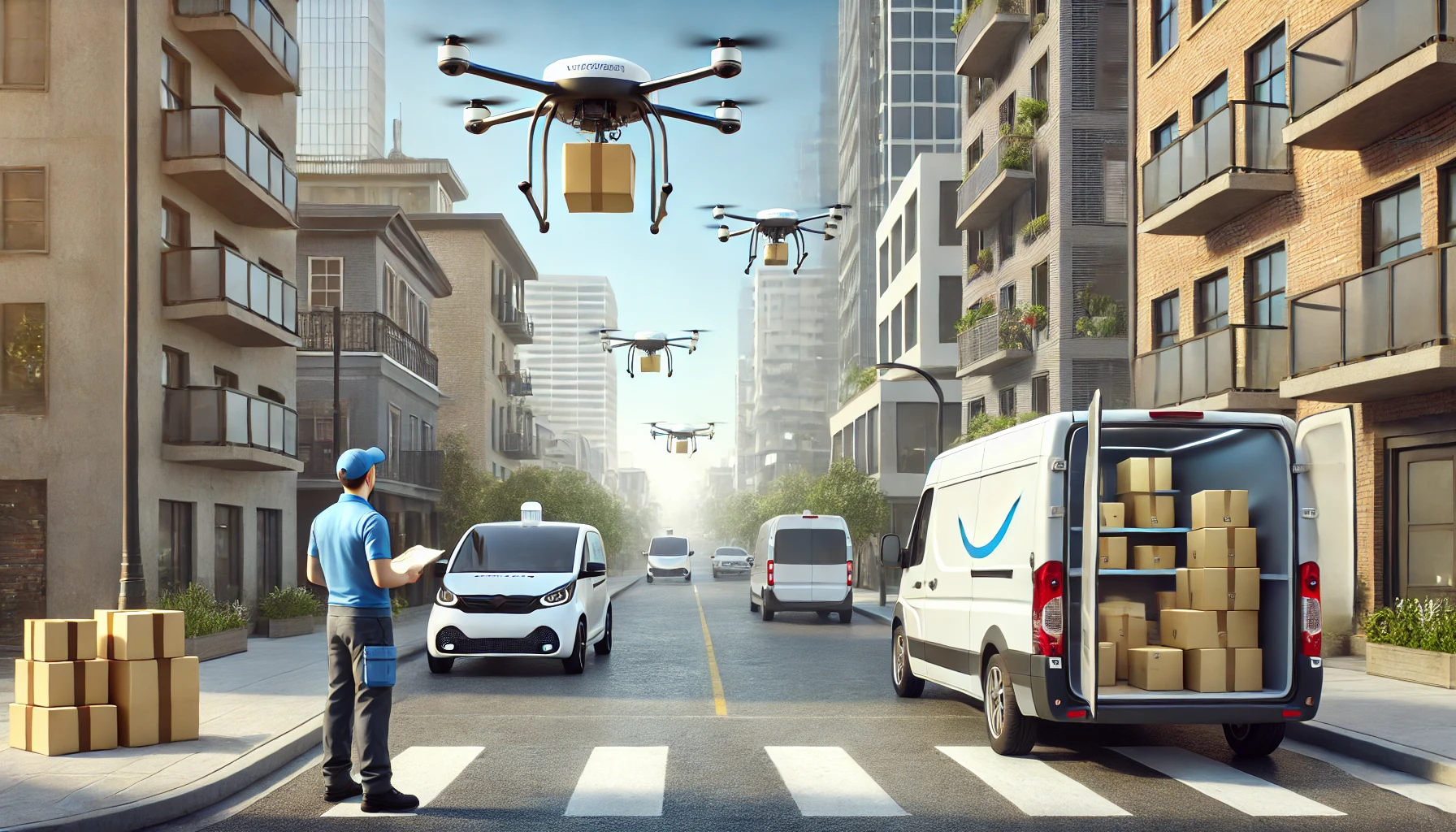Will Drones and AVs Replace Your Friendly Neighborhood Courier? The Autonomous Delivery Revolution

Introduction: The Robots Are Coming… For Your Deliveries
Picture this: It's a sunny afternoon, and instead of the usual delivery van, a drone hovers in front of your door, dropping off your latest online shopping splurge. Or maybe, a sleek autonomous vehicle (AV) rolls up quietly, with no driver in sight. The future of delivery is here, and it’s about as sci-fi as you can get. Autonomous delivery systems are rapidly gaining traction, but are drones and AVs ready to take over the jobs of human couriers? Let’s dive into this tech-powered delivery revolution and explore whether it’s a win for everyone—except maybe your local pizza guy.
Cost Savings: Robots Don’t Ask for a Raise
One of the main reasons companies are pushing for autonomous delivery systems is the potential for cost savings. Human couriers come with salaries, benefits, and the occasional need for a day off (how dare they?). But drones and self-driving vehicles? They work 24/7, don’t complain, and won’t unionize (at least not yet). According to some estimates, delivery costs could drop by up to 40%, thanks to lower labor costs and increased efficiency. Drones can bypass traffic and deliver packages faster, while AVs can cover long distances without driver fatigue. It sounds like a business owner’s dream, right? But there’s more to it than just saving a few bucks.
Efficiency: Drones Zoom, AVs Glide, But Can They Replace Humans?
Sure, drones can zip through the air like something out of a futuristic movie, and AVs can glide smoothly down highways. But can they truly replace the adaptability of a human courier? Drones are perfect for delivering small, lightweight packages—think your next batch of vitamins or the latest phone accessory. They’re fast, nimble, and can reach places humans (or trucks) can’t. AVs, on the other hand, are designed for bulkier loads and longer distances. They can reduce the need for large fleets of delivery trucks and lower fuel costs by operating more efficiently. However, let’s be honest: can a drone navigate your apartment building’s stairwell or ring your doorbell? Not yet, and that’s where human couriers still have the edge.
Job Implications: Will Your Delivery Guy Be Replaced By a Bot?
Here’s where things get a little tricky. Autonomous delivery systems, while efficient and cost-effective, come with some serious implications for jobs in the logistics industry. If drones and AVs become the norm, what happens to the countless delivery drivers out there? Will they be replaced by buzzing robots and driverless vans? Experts are divided. Some argue that while certain jobs might disappear, new opportunities will emerge—think drone maintenance technicians, AV engineers, and system operators. Others fear widespread job losses, particularly in rural or low-income areas where logistics jobs are vital. It’s a classic case of technology vs. the workforce, and while the tech is cool, the human cost might be higher than we think.
Regulations: The Red Tape Slowing Down Your Pizza Drone
Before you start worrying that your favorite delivery guy is about to be replaced by a robot, there’s another hurdle to autonomous delivery: regulations. Governments around the world are still figuring out how to regulate drones and AVs. How high can drones fly? What happens if an AV gets into an accident? Who’s liable if a drone delivers your package to the wrong house—or worse, drops it on someone’s head? These are all questions that need to be answered before we see fleets of autonomous delivery systems in the sky or on the roads. In the meantime, human couriers are safe, at least until lawmakers figure out the legal kinks.
The Future: Drones and AVs, Friends or Foes?
So, what does the future hold? Will drones and AVs replace human couriers entirely? Not quite. While autonomous systems offer significant advantages in terms of cost savings and efficiency, they’re not quite ready to take over entirely. For now, we’re likely to see a hybrid model, where humans and robots work side by side—humans handling the tricky stuff (like getting into your locked apartment building) and drones or AVs taking care of more straightforward deliveries. It’s a win-win, right? Businesses save money, and humans get to keep their jobs… for now.
Conclusion: Are You Ready for a Drone-Delivered Future?
The rise of autonomous delivery systems is undeniably exciting. Drones and AVs have the potential to revolutionize the logistics industry, offering cost savings, increased efficiency, and a futuristic edge that makes every delivery feel a little bit cooler. But with regulatory hurdles, job implications, and the ever-present need for human adaptability, it’s not all smooth sailing. So, what do you think? Will drones and self-driving vehicles become the new normal for delivery, or is there still room for your friendly neighborhood courier? Let us know your thoughts!



